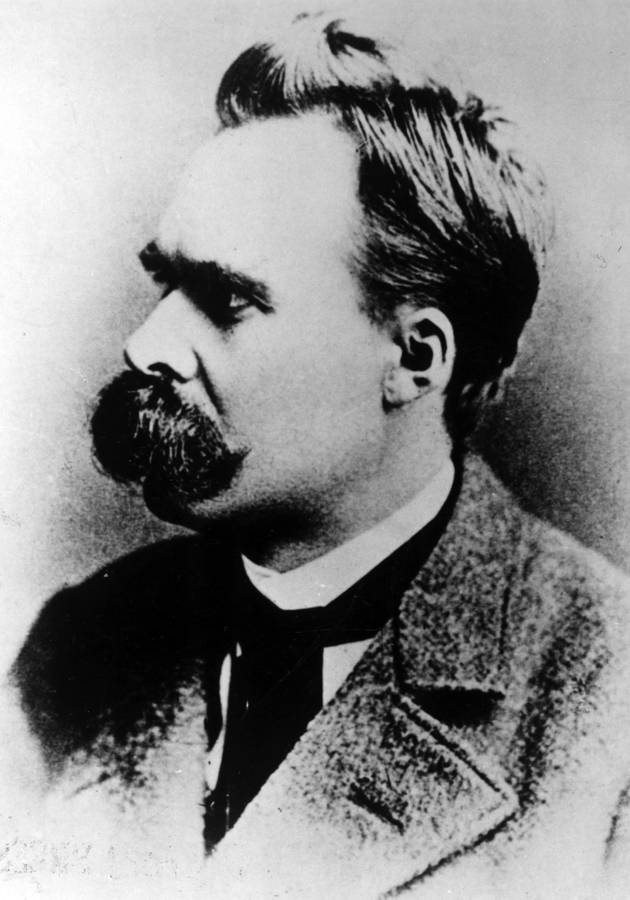When 3 guys from Google Ventures - Google’s arm of investment in technology - come together to write a book, you know that good stuff comes around. Sprint presents us with a simple and effective cadence to help companies solve problems, with a proven model in hundreds of companies. With clear processes and a flow of just 5 days, you'll be able to validate ideas faster with your team. This book is a must-read for entrepreneurs and technology leaders, but its principles can be used in any company and any size team. Innovating is something challenging, whether you are an entrepreneur, a teacher or a multinational executive.
Let's read this microbook in a 12-minute sprint?
To Grow And Execute With Speed, Use Sprints
In your company, have you tried to introduce a new idea? Ever tried to create a new business model? It is extremely common for entrepreneurs and leaders to get frustrated with these challenges. Many of them invest a lot of money to test ideas and end up discovering at the end that this was not exactly the best way to go. To avoid these mistakes and not reach the market with a product that is not what the customer wants or with an incomplete product, you need to seek new approaches. If you ask yourself "what should be my focus now?" Or "how to put a new idea into practice?", You need to know a simple and extremely effective methodology: Sprint. The process was created by designer Jake Knapp on Google and widely accepted, delivering real results. Several Google units, such as the search team and email, use sprints. Even the most ambitious project unit, Google X, has adopted the methodology, including the development of self-driving cars.
Realizing his potential, Jake joined his coauthors and adopted the process in over 100 companies invested by Google Ventures. Sprint is a project management methodology that gives speed to businesses and is based on short cycles of just 5 days. The Sprint methodology requires a process that may seem a bit intensive and challenging but will yield great results. If you are a startup, plunge headlong into the methodology to test ideas faster. In a startup, you do not have many chances of making a mistake when launching a product. If you make a mistake, you usually run out of funds, and the company dies. You need to be able to hit and adapt to speed. With sprints, startups have an efficient method to test their ideas, before too many resources are invested, thus increasing their chances of success.
When To Use Sprints
Possibly, you've seen yourself in a situation where multiple projects are happening, deadlines for deliveries are threatened, a huge volume of tasks are piling up, and physical and human resources are not being as well leveraged as they should be. Jake was in a similar situation. He worked as a designer on the Gmail team at Google. Deadlines were tight. He had only 30 days to design and deliver a feature that helped Gmail automatically organize its users' messages. Despite this challenging deadline, Jake and his team were able to deliver the functionality on time, through a timeline and an organized process. The team was able to prototype, talk to users, develop and launch functionality on time, by organizing the project in sprints.
But how do you know if a Sprint is right for you? For the authors, Sprint is ideal if you need to start complex, challenging projects and do not know where to start. Do you have a new business model to validate? Do you have a great feature that needs to be designed? Adopt Sprints! If what you're looking for is just an incremental improvement, mind you: Sprint is not the best methodology for that. If the project gain is small and the risk is low, it's not worth having an entire team stop for 5 days for a Sprint, okay? The main cases where Sprint applies are:
-
High-investment projects: If the project is expensive, resource-intensive and you do not know where to start, Sprint is ideal to start running it;
-
Projects with short deadlines: If you have little time to deliver a new project, the Sprint methodology will help you accelerate and deliver faster;
-
Stalled projects: Do you have a stagnant project on your priority list? Sprint helps you untangle this design and make sure it starts walking and getting off the paper.
Do Not Do An MVP
Have you ever heard of a startup called Webvan? It came out in 1999 to help people buy groceries and supermarket purchases over the internet. The company raised hundreds of millions of dollars in investments but failed because its partners and executives had no experience with the retail market. They did not know how to deal with the complex logistics of deliveries. They were unable to deliver a complete product that solved customers’ problem at the required speed. Sprint's methodology prevents you from making this kind of mistake. In a Sprint, you can solve problems quickly and effectively, removing the barriers between your current moment and a successful execution. If you've read our micro book Eric Ries' Startup Leap, you've heard of the MVP concept.
An MVP is a minimum viable product, that is, a product developed with the fewest possible functionalities, which tries to collect initial customer feedback so that it can be validated. This approach is interesting, but through sprints, you get to go further. With them, you can create realistic prototypes that are ready to collect real customer feedback while maintaining speed. In a sprint, you do not really need to run in order to validate your results. Whether you are creating a new sales plan for your company or developing a smartphone application, the methodology will be useful. In the investment fund portfolio where the authors work, this methodology has already been used by marketing, sales, product and even finance teams. Ready to find out how Sprint works?
Sprint Preparations
If you want to adopt sprints, you need to prepare yourself before you start. For effective sprints, you need to have small, multidisciplinary teams with clear roles. Jake recommends that teams always be made up of fewer than 7 members and have the skills to deliver the project. The following are some of the roles you would like to have on a team:
-
The decision maker: The company leader or someone who knows the problem to be attacked in depth.
-
The financial expert: Someone who fully understands the costs and financial implications of the project;
-
The marketing expert: Someone who knows how to make your product reaches the hands of the customer;
-
The client expert: Someone who knows the clients and understands their challenges in depth;
-
The logistics expert: A person who understands how to carry out all the steps necessary for the product to be successful;
-
The problems creator: Someone who has an antagonistic vision to the team, to bring new perspectives;
-
The facilitator: A project manager who manages to keep the process running on time and can make decisions with agility;
Before you start the sprint, be sure of three things: that people know the other members of the team and know their roles, that they know the process behind the sprint and finally that they understand the problem to be solved. Every sprint needs two extremely clear and defined roles on the first day. It is necessary to decide who will be the decision maker and who will be the facilitator. The former will be responsible for making difficult decisions and resolving potential conflicts, while the latter will be responsible for managing the process, resources and staff for the sprint to succeed. If the team has 7 members, as recommended, the others will help with the execution, enrich the discussions and contribute their technical skills to the project.
The project should start on Monday. Ideally, you should have space with whiteboards, post-its, pens, coffee, water and healthy snacks to maximize team performance. Also have a timer, to follow the duration of the activities. Another important point: you need to block the participants' agenda so they can work without interruptions, such as meetings, phone calls, and other appointments. It is necessary to remove the possible distractions and have a deadline in place. A Sprint day will have six hours of activity. The author suggests that you start at 10 am and end at 5 pm with a lunch break. With the right team, structured actions and eliminating distractions, one can progress rapidly in that period. A moderate amount of time during each day will ensure the level of energy, focus, and productivity throughout the week.
All ready? Let's go to the 5 days Sprint:
Monday: Defining The Sprint Purpose
The sprint starts on Monday morning. Gather your team in the pre-selected room and make sure everyone is aligned. The first step in the morning is to ensure this alignment by asking each of the team members what is the long-term goal to be pursued. Without this alignment, it is difficult to move fast, and in the same direction, so this step is essential. The next step is to map the challenges. Use structured discussions in advance and ask your team what your biggest challenges are. Once you have the team 100% assembled, you're ready to go. In the afternoon, talk to the experts on the subject within the company and ask them to share information about that chosen challenge.
It's time to create the sprint plan. Do not create a chronological plan, instead plan with the goal in mind, and build the path gradually. Map out the potential pitfalls and problems that may occur and find out what the causes are. Also, map the necessary resources and external factors that may occur. To be successful, make sure the sprint is aligned with your long-term goals. Finally, before reaching the end of the day, choose a clear and deliverable goal. Something ambitious, but small enough to attack a piece of the problem at hand and that can be delivered in a week. Your goal should satisfy your customers and ensure that they can use the outcome of your efforts at the end of the week. Monday's goal is to make the sprint purpose clear to everyone, create rich discussions, map challenges, and clearly define which parts of the problem will be resolved in that sprint.
Tuesday: Finding Solutions
Tuesday aims to define solutions to the problems and challenges encountered on Monday. That is the day of collecting ideas and documenting them. In the morning, have each person write down the solution they would take to solve the problem on a piece of paper and paste it on a wall or whiteboard. After collecting existing ideas, they should be quickly presented to the team. The author calls these demonstrations at the speed of light. In this process, for 3 minutes each team member can present their favorite solutions. Encourage your team to create solutions that count on resources and skills that are different from the usual skills of that professional. With the demonstrations completed, it's time to scribble. Choose the 3 best ideas and let participants create sketches of potential solutions on the wall. The idea is that you have 3 possible paths so that on Wednesday you evaluate them with the team and start developing the solution.
Wednesday: Decision Day
This is the day to criticize the ideas of the previous day and to define which one will be explored in the sprint. Ideas should be glued to the wall, but without revealing who the author is. Anonymity helps people choose the best without personal influences. The important thing is to focus on the ideas themselves rather than on the ones who had them. Discuss the ideas for 5 minutes each and have each participant vote on their favorite ideas. Use colorful post-its so that each person collects them on their favorite ideas and so be clear on the board who is the winner. The top idea wins, and the ideas they missed may end up becoming part of an upcoming sprint. Now, on a whiteboard, draw with the team prototypes on how the best ideas would work. The idea is to make this draft as if it were a movie where the customer is the protagonist and each step designed illustrates a customer interaction with the solution. Design sprints exist to test bold ideas with high potential. Do not focus on small details but on the big challenges. Leave them documented on the board, after all, Thursday is prototyping day.
Thursday: Prototype Day
Now you have good ideas sketched on the board, but only 2 days remaining for the end of the sprint. So it's time to simulate your idea so that it can be presented to customers and thus be validated. Today your team needs to make a realistic prototype, such that users do not realize it's just a prototype. It should be good enough for them to see that it is something close to reality. It also does not need to be perfect, after all, we do not want you to spend the night working. Excessive detailing will tire the team, create slowness in their learning process and leave the whole team frustrated. In your prototype, never use marking texts, like the traditional "Lorem Ipsum". Use real texts, with data from real people. It needs to look realistic, and for that, the data and the texts must also be credible. It is also important that you do not focus on the tool itself, but rather on the quality of the prototype. You can prototype with almost anything, without the need for professional tools that will generate delays. There are great software to create prototypes, but if you need to learn how to use them, it can compromise your sprint. You should start with paper, PowerPoint or simple drawing software. Prototypes are powerful, and it is important that they are done with customer focus, after all, Friday is a fireproof day.
Friday: Interview Day
The sprint ends today, and it's time to interview customers and see their reactions. You need to interview 5 clients based on their interest in the selected problem. Interviewing 5 people exposes 80% of problems and makes sure you do not have to do thousands of interviews to get qualitative feedbacks. Record these video interviews so your team can see the results. Before you show them your prototype, ask questions that will make them feel comfortable and free to be honest. Also ask about their past, to try to understand where your opinions come from. Once people are comfortable with you, ask if they would like to see the prototype. Make it clear that you did not make the prototype, so as not to make them uncomfortable or in fear of hurting your feelings. Ask for honesty and show openness to criticism. While the interviews take place, your team must be in another room watching the scene live. So they can take notes, understand customer perceptions, and write down positive and negative aspects on the whiteboard. Once the interview is completed, analyze the results and evaluate whether the prototype is promising and deserves to be developed or not. Team up to discuss learning and take notes on everything.
End of Sprint
After the 5 days of the sprint, you'll be able to know if an idea is worth developing based on actual customer interactions. If your idea works, fine. Often, you will learn a lot about customers and may have many insights to improve your prototype further. If your idea fails, no problem. In fact, you just saved thousands of dollars and months of development to discard something that users did not want. Focus on finding new solutions instead of thinking about the costs involved in creating that prototype that took only a week. Sprint is fast and inexpensive. Sprints can help you solve major challenges and reduce the risk of your project. By using Sprints, you take fewer chances and come up with better solutions.
Non-Conventional And Valuable Ideas
The Sprint book is full of great ideas and extremely interesting processes. Some interesting points include:
-
It is more important to start slowly to accelerate later. Make sure the team is aligned before you get to the point and start building solutions;
-
Do not seek to involve everyone in creating a unique solution, let people create their scribbles, solutions, and ideas. Once you have access to a variety of possible solutions, it is time to choose;
-
Do not maintain a high level of abstraction in meetings and do not generate over-communication. You need to communicate clearly and with defined times. Adopting processes such as voting and having a final decision maker will accelerate the development of your idea. That draws wisdom from the crowd without the inefficiency of traditional focus groups; * Instead of having all the perfect details to test, create something fast. The important thing is to learn fast and not pursue perfection.
Final Notes:
Imagine if you were able to test ideas and validate them with your clients without spending months in development? How innovative is your company? You can do this by adopting sprints. Sprints are a project management method composed of 5 days of brainstorms, which help you validate whether it is worth investing time and resources in an idea. Combining principles of agile and lean methodologies, the authors were able to create a simple and powerful framework to help companies get ideas out of the paper. The important thing is to align the team, prototype the result sought and validate it with the client.
12min tip: Did you like this book? Do you want to put the concepts into practice? Watch the Google Ventures Youtube videos demonstrating how to get organized to create your own Sprint. Are you interested in product management and want to read more? Also, read our microbook, "Inspired: How to Create Products That People Love". And if your challenge is to learn more about how to get ideas from paper, read "The Lean Startup" here at 12min!





























